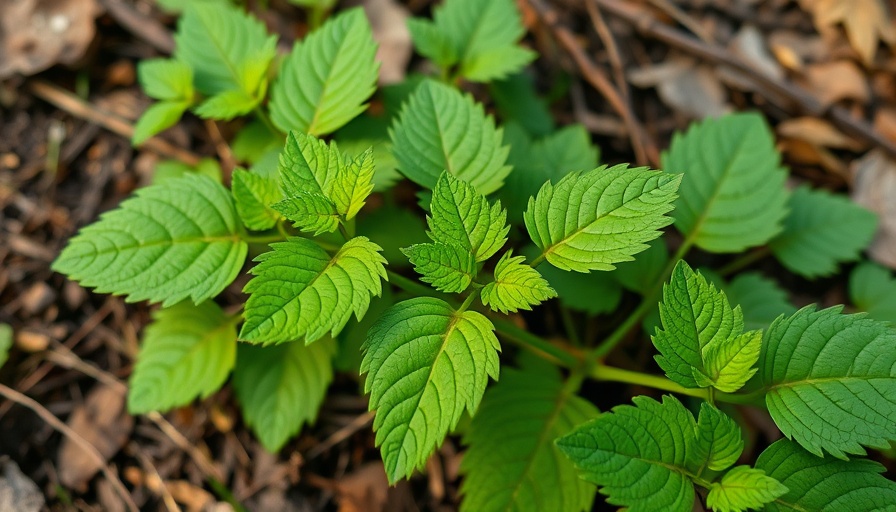
Unlocking the Secrets of Stinging Nettles: Nature's Hidden Gem
If Sleeping Beauty had been a keen gardener, she might well have pricked her finger on stinging nettles—or more aptly, used them to soothe her wounds. While many view this wild plant as a nuisance best avoided, it offers a myriad of health benefits that can enrich both your garden and your well-being.
A gardener recently lamented their battle with stinging nettles, choosing to uproot this prickly plant from their patch. Across the community, however, others are catching glimpses of its potential, using it for medicinal purposes, including managing chronic pain and improving nutrition. This contrasting perspective highlights how this misunderstood plant is creating surprising health solutions right in our backyards.
What Are Stinging Nettles?
Commonly referred to as nettles, stinging nettles (Urtica dioica) are herbaceous perennials found across much of the globe. Recognized for their sharp sting, these plants possess tiny hairs filled with histamine and formic acid. These hairs can create a slight rash upon contact, putting many gardeners on alert and deterring casual encounters. Yet, stinging nettles possess nutritional properties that should not be overlooked.
The Health Benefits of Stinging Nettles
Historically, stinging nettles have been used in herbal remedies for various health concerns. These versatile plants are packed with vitamins A, C, K, and several B vitamins, along with minerals like iron and calcium. Regular consumption of nettles can boost your immune system, improve circulation, and even serve as a natural diuretic.
Moreover, nettles can aid in alleviating allergies and providing relief to those suffering from respiratory issues. By introducing these plants into your daily diet—as tea, soup, or even as a creative lasagna alternative—you tap into nature's pharmacy.
From Pain Relief to Nutritional Powerhouse: A Personal Story
One local herbalist, LoriAnn Bird, passionately shared her experience with stinging nettles. She emphasized how incorporating nettles into her diet significantly improved her iron levels during perimenopause, a time when many women face nutritional challenges. Her imaginative approach included creating soups that extract the plant's minerals, providing a bioavailable source of required nutrients.
But not everyone finds nettles easy to handle; for those with specific allergies or sensitivities, caution is advised. Personal experiences highlight the importance of individual responses to this seemingly simple plant.
Growing and Using Stinging Nettles
If you're intrigued by the idea of cultivating nettles, the good news is they thrive in various garden conditions. However, they are best harvested before flowering, as the leaves can become overly rigid and irritating. Whether you decide to forage for stinging nettles or cultivate them yourself, proper identification and cautious handling are crucial.
Stinging nettles can be used in a variety of culinary dishes. Consider incorporating them into your garden design as a source of nutrients, or mix them into a healthy green smoothie for a refreshing boost. The seeds themselves are considered a superfood, further enhancing their utility in your diet.
Stinging Nettles and Their Role in Biodiversity
Stinging nettles are not only beneficial for humans but also play a significant role in local ecosystems. They serve as host plants for various butterfly species, indicating their importance in promoting biodiversity within our gardens. By allowing nettles to grow, gardeners can contribute to the health of local pollinator populations, creating a vibrant and functional ecosystem.
Conscious Gardening: The Importance of Plant Diversity
This brings us to a broader perspective on gardening and the value of diversifying our plant selections. While the focus often lies on conventional flowers and vegetables, embracing plants like stinging nettles can be transformative. They provide surprising benefits, enriching our diets and enhancing the ecological interconnections in our gardens.
As we move towards more sustainable gardening practices, let’s leave some space for stinging nettles in our patches. After all, they might just be the unsung heroes we need amidst conventional green thumbs.
Call to Action
As you explore your gardening goals this season, consider integrating stinging nettles into your plans. This resilient plant can offer various health benefits and contribute to a thriving garden ecosystem. Start your journey with stinging nettles today, and enjoy the many gifts they offer!
 Add Row
Add Row  Add
Add 




Write A Comment